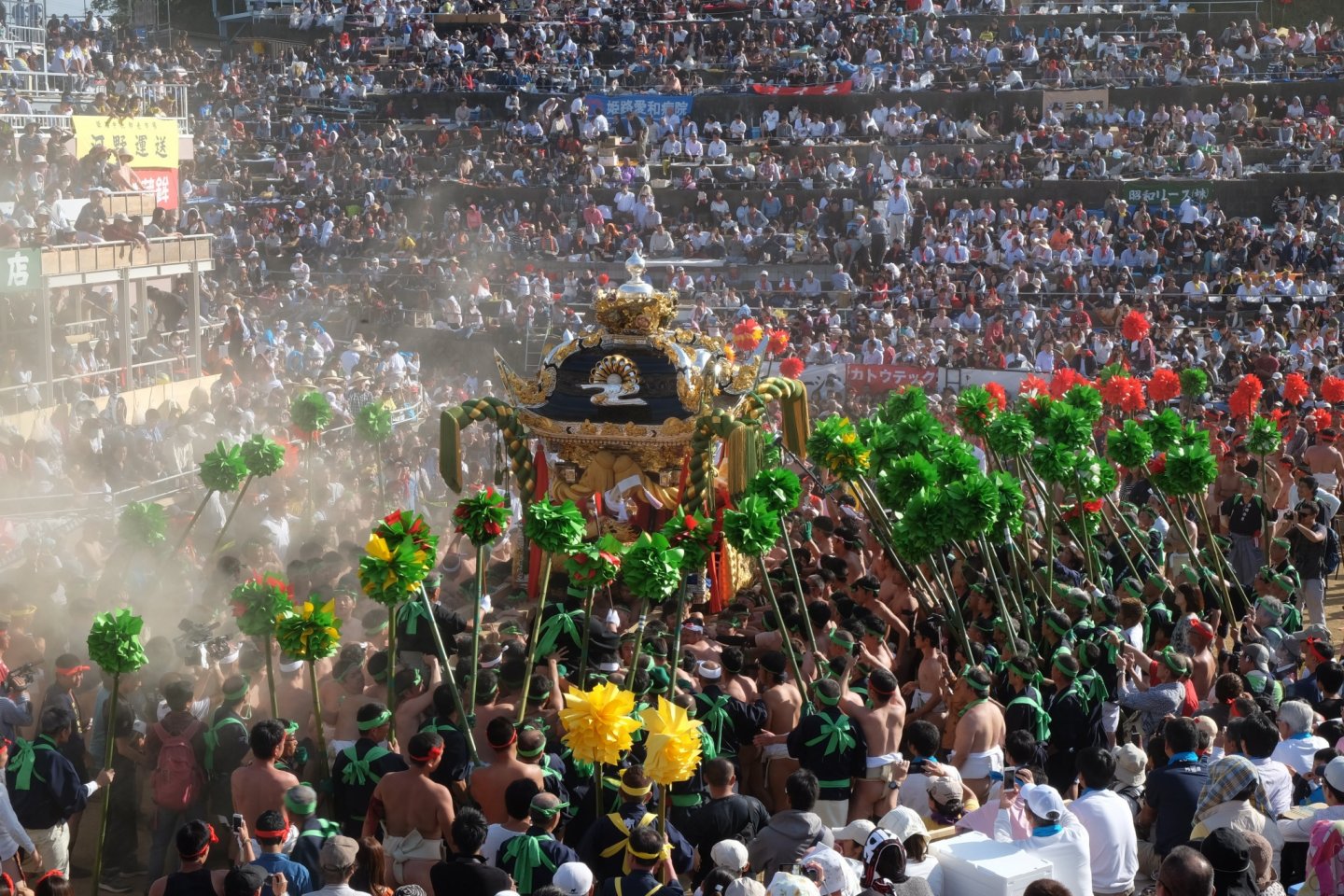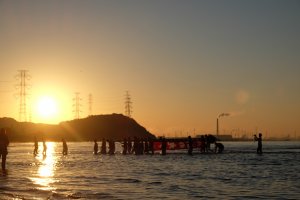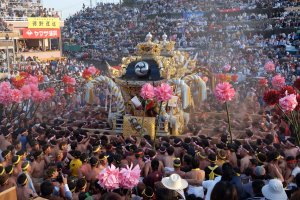Nada no Kenka, the so called fighting festival at Himeji, is celebrated every year on October 14 and 15. Both days are spectacular, but particularly the main event on the second day leaves all expectations way behind. It’s a magical experience which I describe in this article.
The neighbourhood of Nada is formed by 7 districts: Higashiyama, Kiba, Matsubara, Yaka, Mega, Usazi, and Nakamura. All of them carry their individual beautiful and expensive floats (yatai) during both days of the festival. However, only one district has the honor to carry the mikoshi (portable shrine) on the second day of the celebration. This year was Nakamura’s turn.
There are three mikoshi. The lightest is carried by men up to 25 years old, the second by men between 26 and 35, and the heaviest by men above 36. All members wear a headband indicating their age group: red, yellow, and white respectively.
Early morning of the 15th, the men responsible to carry the mikoshi walk into the sea to purify themselves. With the sun rising behind, the silhouettes of the men and their banners transforms Shirohama coast into a captivating landscape. As soon as they go out, they stand next to a wood fire and drink sake to warm up.
Few hours later, a ceremony similar to the first day takes place at Matsubara Hachiman Shrine. All seven yatai enter to the shrine as a big parade where a priest purifies the wooden structures and the participants.
The almost 100,000 visitors watch the ceremony, but most of them leave the shrine after two or three districts are blessed. They don’t want to miss the main show.
On the foot of Otabiyama hill, there is a huge arena where the yaitai and mikoshi are carried before taking them up the hill. It is here where the three mikoshi strike each other with the actual purpose of breaking them. This is called mikoshi-awase. After, the yatai-awase (fight of yatai) takes place.
There’s no specific rule for the fights. Anyone can challenge anyone. Most of the time, two yatai fight each other. However, sometimes three or even four floats fight.
Once all seven villages have gone up the hill and is dark, they go back to perform another mikoshi-awase and yatai-awase. The only difference now is that all of them are beautifully illuminated. The combination of the lights, the dust raised by the fights, the arena yelling yoyasa, yoyasa (cheering up), and the passion spread by the men carrying the yatai makes you feel you are in a dream. I literally couldn’t believe what I was seeing.
Unfortunately, the seats at the arena are exclusively for locals who reserve them a year in advance. Each two by one meter box cost approximately ¥70,000. I was extremely lucky and was invited to join a family for the event. I couldn’t stop thanking them for such an amazing experience.



































